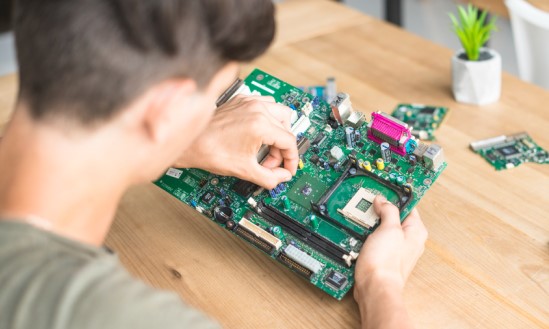Minimal Kiosk Browser/Kweb Explained & How to Use
Part 1 : What Is Minimal Kiosk Browser or Kweb?
Minimal Kiosk Browser (also known as Kweb) is a lightweight web browser optimized for single-purpose display scenarios, commonly used in "Kiosk Mode" on devices like the Raspberry Pi.
It is designed to be resource-efficient and fast-loading, offering features like automatic full-screen display and hidden navigation bars, making it ideal for digital signage, interactive exhibits, and public information screens.
Part 2 : Features of Minimal Kiosk Browser
What can Minimal Kiosk Browser do? Here are some:
● Web Browsing: It can display most web pages, and it supports modern web technologies, including HTML5.
● Media Playback: It can play HTML5 video and audio, and it supports hardware-accelerated video playback on systems with compatible hardware.
● Kiosk Mode: It can run in full-screen mode, hiding all browser controls. This is particularly useful for applications like information kiosks and digital signage, where you want to display a specific web page or app without any distractions.
● Download Files: It can download files, and it provides a basic download manager to view and manage your downloads.
● Keyboard Shortcuts: It supports a variety of keyboard shortcuts for common actions, making it easier to use without a mouse.
● URL Bar: It has a URL bar that can be used to navigate to specific web pages.

Part 3 : What Devices Can Minimal Kiosk Browser Be Used On?
Minimal Kiosk Browser (Kweb) is primarily designed for the Raspberry Pi, a series of small, single-board computers. It's optimized for these devices, providing a lightweight and efficient web browsing experience.
In addition to the Raspberry Pi, Kweb could potentially be used on other Linux-based, ARM architecture devices, as it's a software written for such systems. However, the compatibility and performance on these other devices might vary and is not guaranteed. These may include:
- Other Single-Board Computers (SBCs)
- Certain Microcontrollers
- Linux-Based ARM Devices
Part 4 : How Does Minimal Kiosk Browser Works?
Here are the steps to install and use Kweb on a Raspberry Pi:
- Step 1.Update System
- Before installing any new software, it's always a good idea to update your system. You can do this by running the following commands in the terminal:
- sudo apt-get update
sudo apt-get upgrade
bash
- Step 2.Install Kweb
- You can install Kweb by running the following command:
- sudo apt-get install kweb
bash
- Step 3.Launch Kweb
- Once Kweb is installed, you can launch it from the terminal by simply typing 'kweb'.
- Step 4.Kiosk Mode
- If you want to use Kweb in kiosk mode (full screen, with no browser controls), you can do so by launching it with the '-K' option, like so:
- kweb -K http://www.example.com
bash
Part 4 : Minimal Kiosk Browser vs Kiosk Browser
Minimal Kiosk Browser (Kweb) and Kiosk Browser are both designed for similar purposes - to provide a simplified, full-screen browsing experience, often for use in information kiosks or digital signage. However, they have some differences.
1 Platform Compatibility
Kweb is specifically designed for the Raspberry Pi, a series of small single-board computers. On the other hand, Kiosk Browser is typically a term used to describe a category of browsers designed for various platforms, including Windows, Android, and iOS.
2 Functionality
Kweb, being designed for low-power systems, is extremely lightweight and lacks some features found in more full-featured browsers. Kiosk Browsers on other platforms may offer more functionality, depending on the specific product.
3 Platform Compatibility
Both types of browsers usually offer a range of customization options, allowing you to tailor the browsing experience to your specific needs. This can include things like disabling certain browser features, locking the browser to a specific website, and customizing the appearance of the browser.
4 Security
Both types of browsers often include features designed to secure the browsing experience, such as disabling certain types of web content, preventing users from navigating away from a specific page, and more.
Part 5: An Alternative to Kweb
Kweb has recently been discontinued, and the developers are no longer offering any form of support. if a mimal kiosk browser is still what your business uses, most Raspberry PI users recommend Midori in its place as it’s currently well supported. For businesses looking for a full Kiosk Browser system, consider the Android Kiosk Mode feature of AirDroid.
AirDroid Business - MDM Solution with Kiosk Mode Supported
AirDroid Business helps to manage and control the Android mobile workforce. Features include: Single & Multi-App Mode, Kiosk Browser with built-in incognito mode and auto-clear cache, Website Whitelist, Custom Layout, and more.
It also provides a secure and centralized platform to manage all devices. All these make it an excellent choice to help enhance device management and security in an organization.







Leave a Reply.